 |
||||
|
||||||||
| a. | Volume of water in the body is obtained by multiplying the body weight by the distribution rate (0.7 for male) in Ueno's method. |
| b. | Deducted from the theoretical blood alcohol concentration is the loss of alcohol including: that eliminated from the body through perspiration and breath, that broken down, and that dissolved in a different way depending on the type of body fluid. Two volumes are obtained here: one calculated with maximum alcohol loss (0.8) and one with minimum alcohol loss (0.7).4 |
|
|
| c. | As alcohol concentration decreases at a rate of 0.12 − 0.19 mg/ml every hour, this value, multiplied by the elapse of time after drinking, is deducted from the values obtained in b.5 |
|
Maximum value 0.754 mg/ml × 0.8 - 0.12 mg/ml × 2 hours = 0.363 mg/ml Minimum value 0.754 mg/ml × 0.7 - 0.19 mg/ml × 2 hours = 0.147 mg/ml Blood alcohol concentration of the 75 kg male, two hours after drinking 1,000 ml of beer, comes out somewhere between 0.147 and 0.363 mg/ml, a considerably high figure. However, the values obtained here are just calculated values, and the actual blood alcohol concentration may be outside this range depending on physical conditions and other factors. (4) Change in actual breath alcohol concentration and Ueno's formula Each of the 16 test subjects (males aged 25-51) was asked to consume an amount of alcoholic beverage that would result in a breath alcohol concentration of 0.2 mg/l, 20 minutes after drinking, taking into account weight, physical condition, amount of food in the stomach, etc., in order to see the change in breath alcohol concentration. Measured values of breath alcohol concentration and values calculated by Ueno's formula are compared in the following charts. |
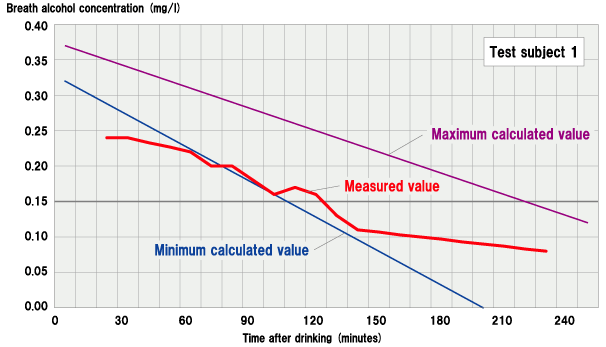
|
||
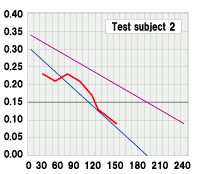
|
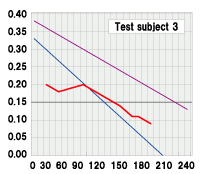
|
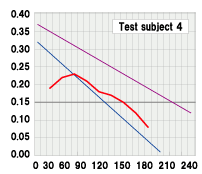
|
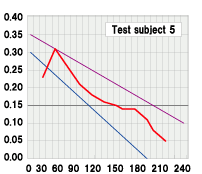
|
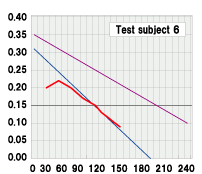
|
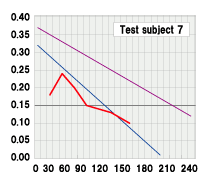
|
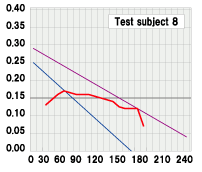
|
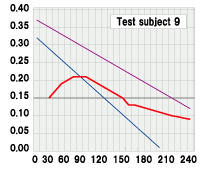
|
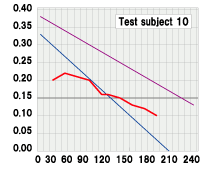
|
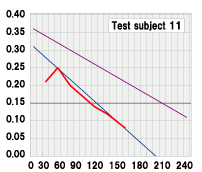
|
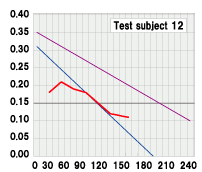
|
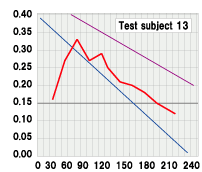
|
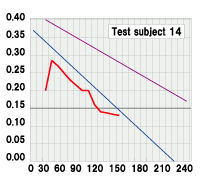
|
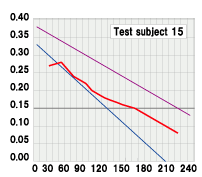
|
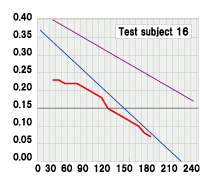
|
|
In the majority of test subjects, measured values were within the range of calculated values (between maximum and minimum values), showing that breath alcohol concentration can be calculated with a fair amount of accuracy. But calculated values are just calculated values, and are not 100% precise. Some individuals indicate values outside the calculated ranges. Accordingly, it should never be assumed that one's alcohol concentration is low enough just because sufficient time has passed since drinking. Individuals show significant differences in the peak value of breath alcohol concentration, the time when the value peaks out, and the rate of change in breath alcohol concentration. In this test, subjects consumed an amount of beer ranging from 850 cc at the least to 1,500 cc at the most, spending about half an hour for drinking. Most of the subjects indicated breath alcohol concentration of 0.15 mg/l or more, or at least close to that level, after two hours. Even after three hours, half the subjects recorded 0.10 mg/l, with a few still showing close to that level after four hours. Data after four hours was not taken, but it is safe to assume that a fairly high breath alcohol concentration would still be detected four to five hours after consuming alcohol. |
Institute for Traffic Accident Research and Data Analysis (ITARDA) |